One of a trio of courses on Grosse Ile, an island in the middle of the Detroit River approximately 15 miles south of Hart Plaza, Grosse Ile G&CC is a 1920 Donald Ross design born from the Grosse Ile Casino Association. The principle founding figure of Grosse Ile was John Kelsey, a summer resident of the island, founder of the Kelsey Wheel Company, co-founder of Detroit Athletic Club and one time part owner of the Detroit Tigers.
Taking two years to construct under the guidance of William Connellan (who I believe was Grosse Ile's first greenkeeper), much of the course essentially required capping with a mix of loam, cinders and sand. The course features mainly plateau greens with two valleys running north-south through the property. Many holes bisect the valleys at skewed angles and this is what creates much of the interest for tee to green play. Additionally, the greens are nothing short of outstanding. Some have severe internal contours with ridges and pimples and some have fall-away fronts which feed back down to the valleys. Indeed, given modern green speeds, #s 9 & 10 were deemed a bit unruly and their fronts were raised.
The original Ross routing is in place, but the hole numbers have changed to accommodate the rebuilding of the clubhouse after a fire in 1947. The fire also necessitated selling off land to the immediate west side of Meridian which was originally planned as extra nine holes for what was to be a real estate/golf scheme; these holes were never built. The new course sequence left five holes and the house on the north side of Bellevue Rd and thirteen holes on the south side.
While Grosse Ile is overwhelmingly about serving its members first and foremost, the club has hosted a few prestigous events. Among these were the 66th Western Amateur Golf Championship played during a torrid August heat wave in 1968. That tournament attracted 180 of the nation's finest amateur players and was won by Rik Massengale of Texas, who soon after joined the PGA tour. The club also hosted the Michigan Amateur in 2004. Given his experience with the greens, it was not a great surprise that Grosse Ile member Jeff Cuzzort took home the trophy. Shortly thereafter, Mr Cuzzort turned professional.
The club can be proudest for hosting Michigan's oldest Invitational. Originated in 1937, The Grosse Ile Invitational can number several famous golfers among its competitors; these include Arnold Palmer, Chuck Kocsis (first winner), Chick Harbert, Walter Burkemo and Frank Stranahan. No mention of the Invitational or the club can be made without discussing Glenn Johnson. Johnson partnered four separate golfers in winning the Invitational five times during three decades. This, however, is only a mere sampling of his exploits. Fifteen time club champion, Johnson also won the Michigan Amateur on five occasions. In later years he went on to have a successful senior career including the low amateur honours at the 1981 US Senior Open held at Oakland Hills.
In typical Ross fashion the opener is a short par 4 which plays downhill for the drive, then uphill for the approach. The green is of the fall-away type and gives the golfer an accurate introduction as to what he shall face with the flat stick. Evidence of Detroit's once mighty industrial back bone looms in the background. The Trenton Channel Power Plant is a coal fired station built in 1949 and owned by Detroit Edison, a subsidary of DTE Energy.

#2 turns back on the first and plays from a high tee into a valley, then uphill for the second. For most, the approach is blind to a tricky green with oob just beyond. One can see that despite some tree work Grosse Ile still requires additonal tree removal to allow the design to play as Ross envisioned some 90 years ago.
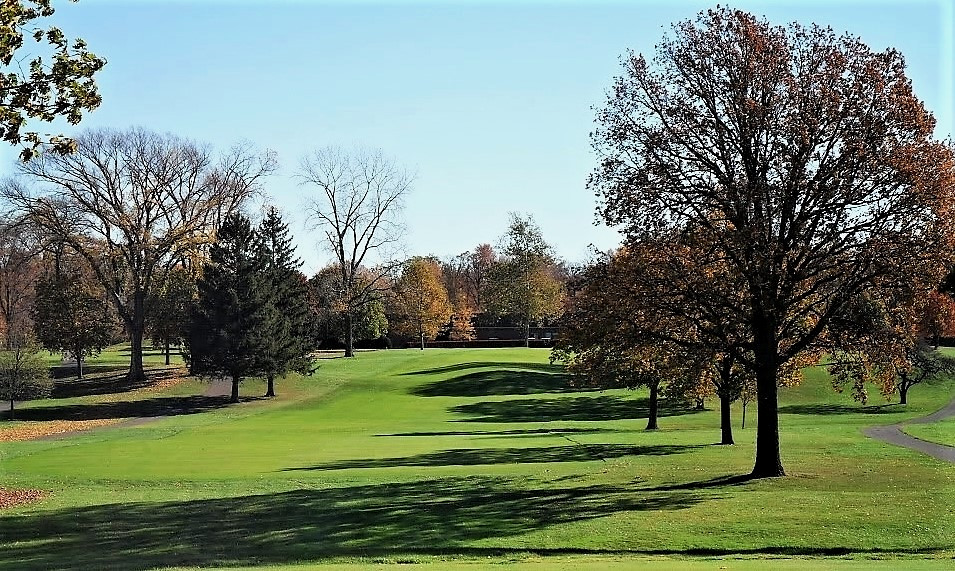
The three-shotter third once again turns on the previous hole. The drive is a bit troublesome due to the entire length of the hole playing along the Grosse Ile Parkway. The hole is reachable in two, but it may pay to lay-up to an advantagous spot for a short approach.
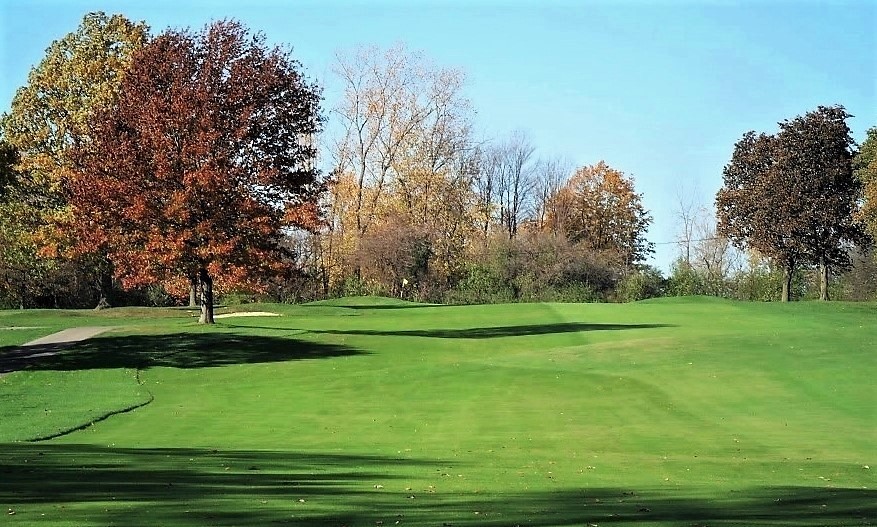
The first par 3 is fairly long and can play much longer into a southerly breeze. In the past few years there has been work to push the rough away from the greens and create more green space. Unfortunately, despite Grosse Ile being a wonderful course to walk, the tee to green approach with the cart paths distracts the eye from the glorious architecture. We now cross Bellevue Road for the fifth hole, a shortish par 4. This is the first hole to feature a double valley fairway broken up by a high ridge fairway and green. The player must decide if it is best to stay on top of the hill for the drive or try to drive to the flat over the hill. Grosse Ile's design is very clever in using this style of architecture which helps keep the greens and some part of the fairways dry during wet weather. One would think this characteristic would get over-played, but Ross mixes up the shot requirements enough to keep each hole distinctive. The green for this hole is one of the more outlandish on the course as it features a hump back which splits the green in two. It can often times be better to miss short and on the correct side of the hump rather than try to putt over the hump.
The following hole, a par 3, also highlights a hump back green, but not to the degree of the 5th.
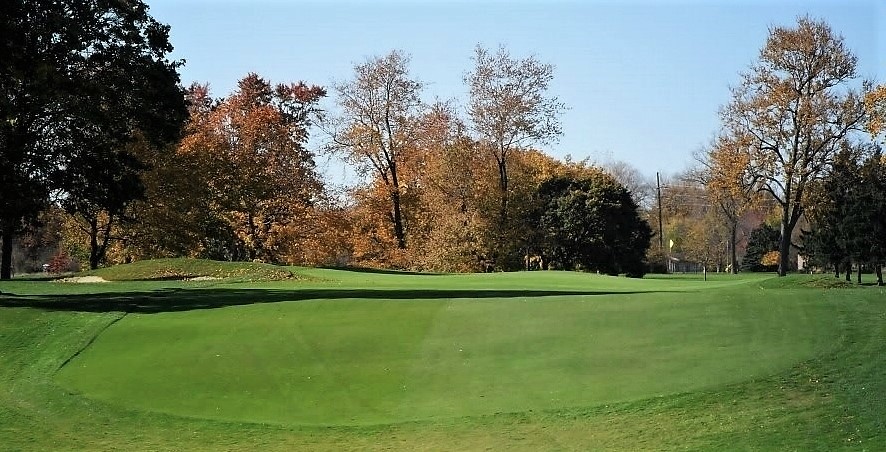
#7 doglegs left between sentinel trees. Like the 4th, this hole can often play longer than the yardage suggests. The green is essentially at grade level, but this in no way suggests it will be a dull affair.
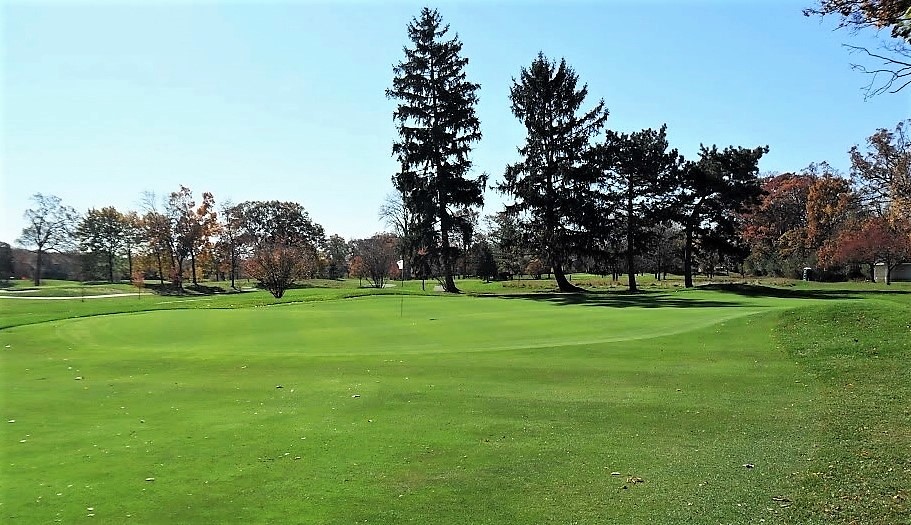
The 8th is a shortish three-shotter harangued by well placed bunkers in the driving and lay-up zones.

After re-crossing Bellevue Rd, the ninth heads back toward the clubhouse. As on #5, the golfer must decide on his length of drive strategy. The difference between approaching from the hill or the flat is quite marked.

The entire back nine is located on the other side of Bellevue Road and opens with perhaps the best hole on the course. The drive looks innocent enough down a fairway which appears to be flat...until one reaches an area approximately 175 yards from the green. The hole then dives through a valley then up to meet a plateau green somewhat stepped into a mildly rising hill. The inadequacy of the bunkering is fully evident and helps to underscore how tree clearing can bring a hole to life.
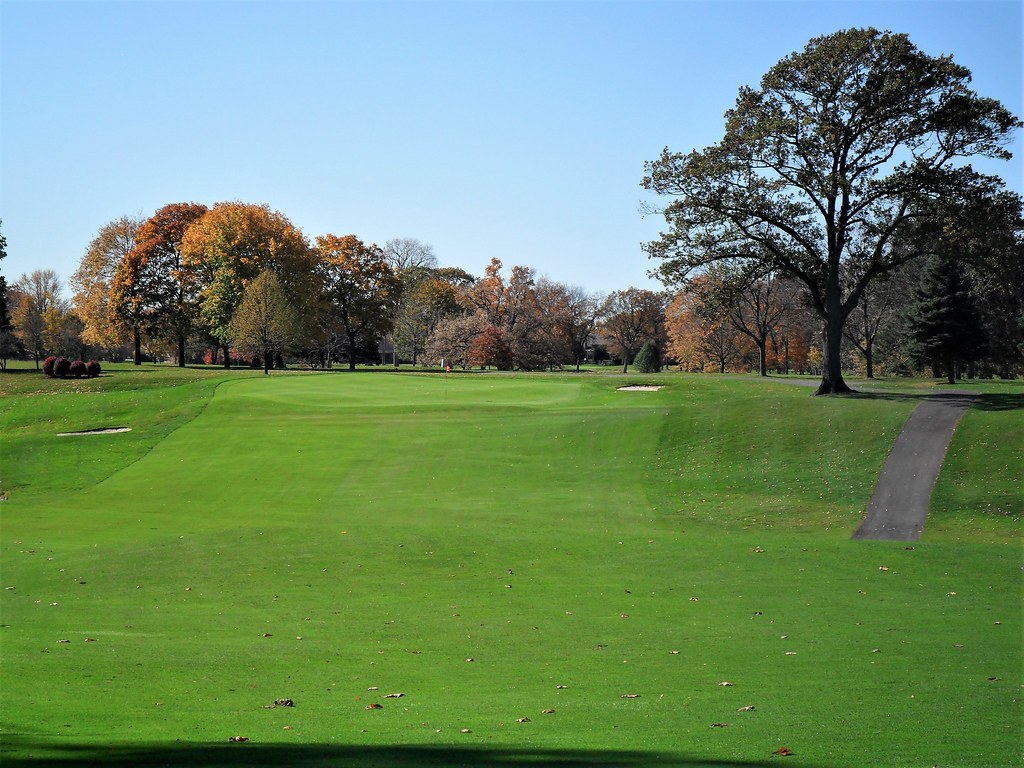
Behind the green showing the severity of slope down to the valley.

#11 is a severe dogleg left with bunkers on the corner. Trees just ahead and left of the tee compromise the playing nature of this hole. There are also trees on the right which block a great view of the 14th hole. A lovely straight away short par 4, the 12th moves through a few valleys deep enough to create a blind approach. The green slopes quite severely from back to front making any over hit approach a dicey affair.

The short 13th is distinguished by one of the most severe back to front greens I have played. The rocks were placed near the water to stop putts from watery graves. Another terrific short par 4, #14 legs to the right with an old oak guarding the left side of the landing area. A good drive is right of the tree and often leaves a wedge approach to an uphill green. A lot of trees have been cleared out down the right.

Behind the green.
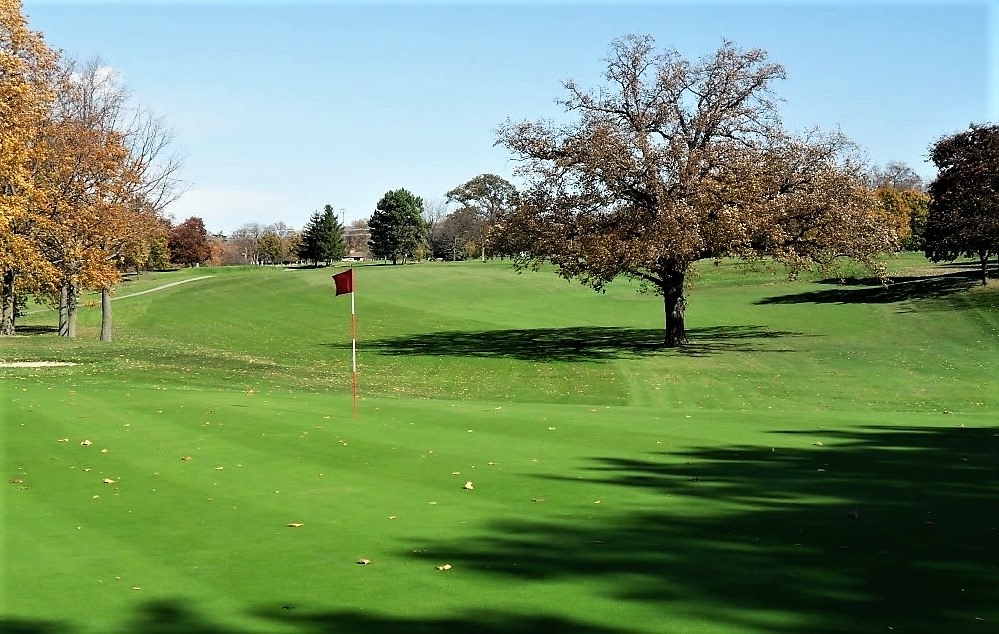
Playing to a plateau fairway, the 15th green is distinguished from the 9th due to the green sitting much lower.


The next hole has long been one of my favourites at Grosse Ile. As is so often the case, the drive plays out over a hill and if one is long enough he can reach the bottom for a flat lie. However, what sets the 16th apart is the green. It runs away from the fairway and has a pimple in its middle.

The best three shotter was saved for the penultimate hole. Like nos 3 and 8, the 17th is reachable in two, but the drive and approach must be accurate. The final hole is unsual as it is a long par 3 some 240 yards in length. The hole works well as a closer because the green is probably the least undulating on the course.
I think it is fair to say that the greens are outstanding and the movement of the fairways always keeps players mentally engaged. In other words, the bones of a terrific course are in place. If more trees were removed, the cart paths sympathetically placed and most importantly, a proper bunker scheme employed, I think Grosse Ile would be greatly enhanced. It is clear Ross thought Grosse Ile was a signifcant addition to his portfolio because the course was included in his 1930 booklet, Partial List of Prominent Courses.



Ciao